Oregano is an ornamental aromatic herb that gives a deep, rich taste to pasta and casserole dishes. It’s very popular in Italian cuisine and widely grown worldwide, but is oregano a perennial or annual? Let’s discover where oregano comes from and how you can grow it in your own backyard.
What Is A Perennial Plant?
Perennial plants grow back each year and re-flower. There are deciduous perennials and evergreen perennials. Deciduous perennials lose their leaves in fall (and sometimes their stems), dying back to a root ball so that they can survive the colder temperatures.
Annual plants do all their growing in one year, from germination to setting seed and dying. Bedding plants like marigolds are usually annuals grown from seed each year.
It’s worth mentioning the biennials too. Plants such as parsley and sweet willams are biennials germinating in year one, then flowering and seeding in year two before dying.
Biennials have a two-year lifecycle, annuals have one year, and perennials live for more than two years. Some perennials can live for decades, but oregano is a perennial that lasts around 5-10 years in warm climates.
All About Oregano
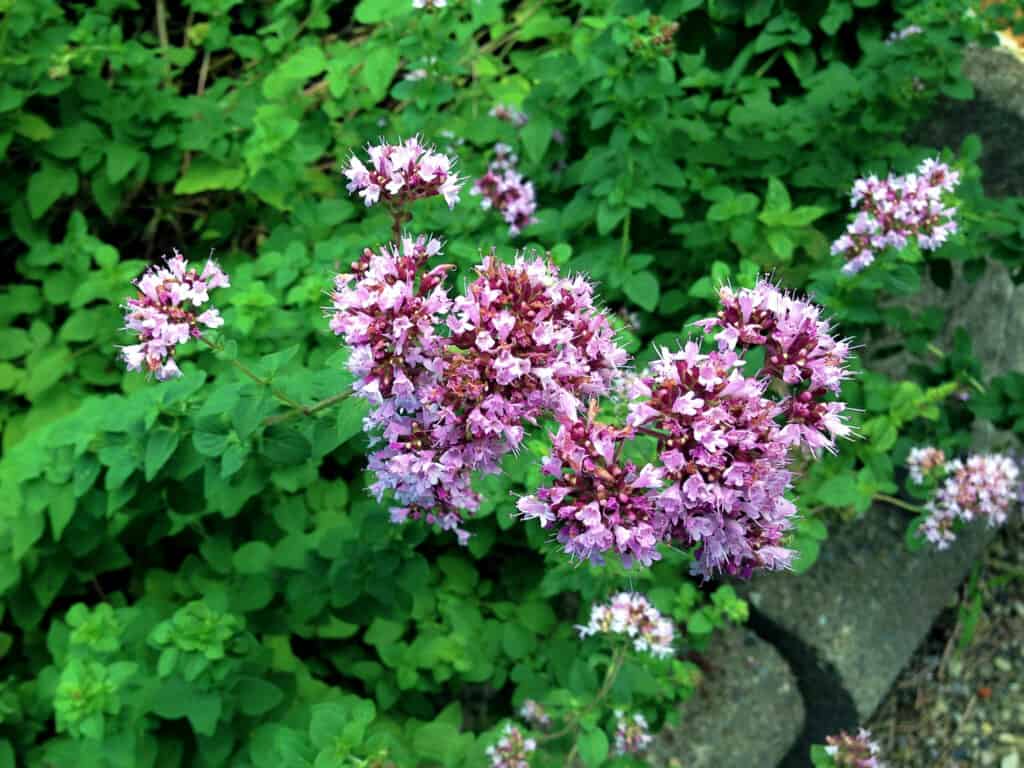
There are numerous ornamental cultivars, but when people refer to oregano, they generally mean culinary
origanum vulgare.
©Kei Tsuzurahara/Shutterstock.com
Oregano (Origanum vulgare) is a woody herb, and despite its distinctive scent, it’s a member of the Lamiaceae mint family. Oregano is native to the Mediterranean and western Asia but has naturalized in the warm areas of the Americas.
It’s often called origanum or wild marjoram, and sweet marjoram is a close cousin. There are numerous ornamental cultivars, but when people refer to oregano, they generally mean culinary origanum vulgare.
Culinary oregano is a small (one foot tall) subshrub with square stems and oval leaves with a fine, woolly coating. When rubbed, its leaves emit oils and a warm woody scent to put off grazing animals.
It’s not often left to flower, but when it does, the blooms are very pretty shades of pale purple and pink spikes held above its foliage mound. Pollinators adore oregano flowers!
Oregano means brightness of the mountain in ancient Greek. In reference to its habitat – oregano loves well-drained, sunny Greek mountainsides (as do we!)
In ancient Greece and Rome, perennial oregano was used to treat respiratory illness, and the English Tudors would sprinkle it across the floor to freshen rooms and keep insects away. It was taken to the Americas with the first settlers and quickly naturalized there in warm climates. Today, oregano is under the spotlight for its food preservation and soothing gastrointestinal properties.
Oregano: Perennial or Annual?

Oregano does not do well in cold regions.
©Volosina/Shutterstock.com
Oregano is a perennial sub-shrub in its native habitat and zones 5 or above in The States.
Zones 4 and below, and across northern Europe, are usually too cold for oregano to survive, so it dies off. This is why some gardeners think oregano is an annual that requires re-seeding each year.
Will Oregano Return Each Year?
Perennial oregano will come back each year in warm climates, including zone 5 and above. In cooler temperate areas that are touched by frosts, oregano can be brought indoors for winter or grown as an annual.
Should I Cut Back My Oregano?
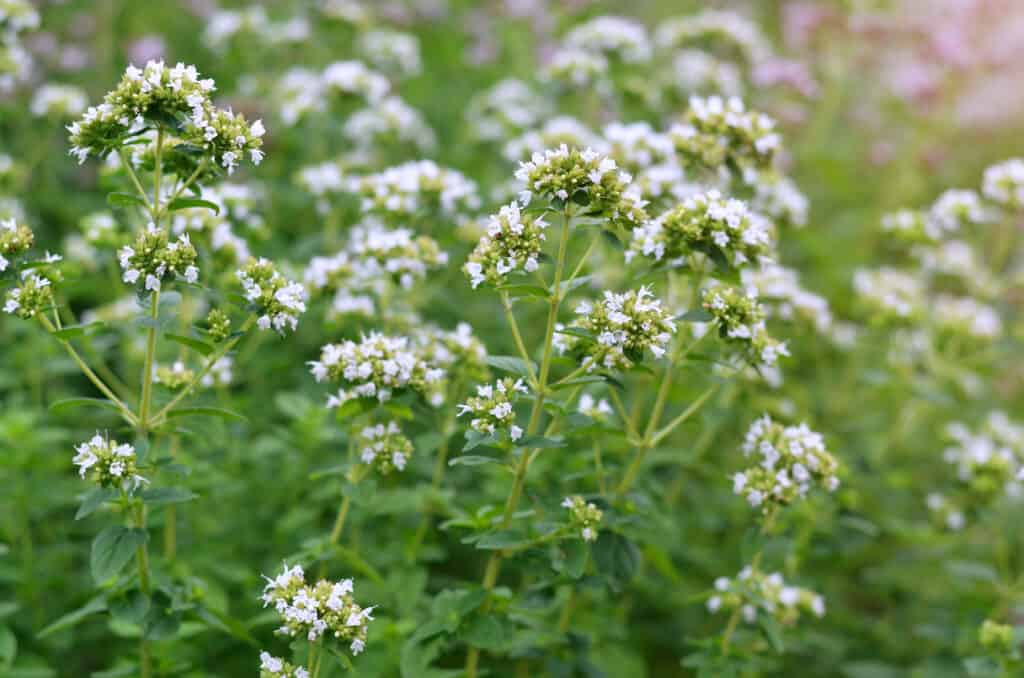
Oregano’s flavor intensifies when it’s dried out.
©Julitt/Shutterstock.com
Yes, cut back oregano for tastier leaves. New foliage has the strongest flavor, so it’s worth pruning back the bush in early summer for a second flush of foliage.
But don’t throw the clippings away. Hang long stems in a cool, dry place and spread shorter pieces on a kitchen roll to dry. Once it’s dry, store it in a jar, ready for winter!
Oregano’s flavor intensifies when it’s dried out and adds rich depth to fish, meat, pasta, spaghetti bolognese, and soups.
Shall I Let My Oregano Flower?
Yes, let your oregano flower! There’s no scientific evidence that flowering inhibits foliage taste, although some gardeners say this is the case.
Pollinators find oregano nectar irresistible and make a literal beeline to oregano flowers. Bees are essential pollinators that ensure our food supply and build a healthy ecosystem. It’s down to all of us to keep the bees happy.
Is Oregano Poisonous To Dogs
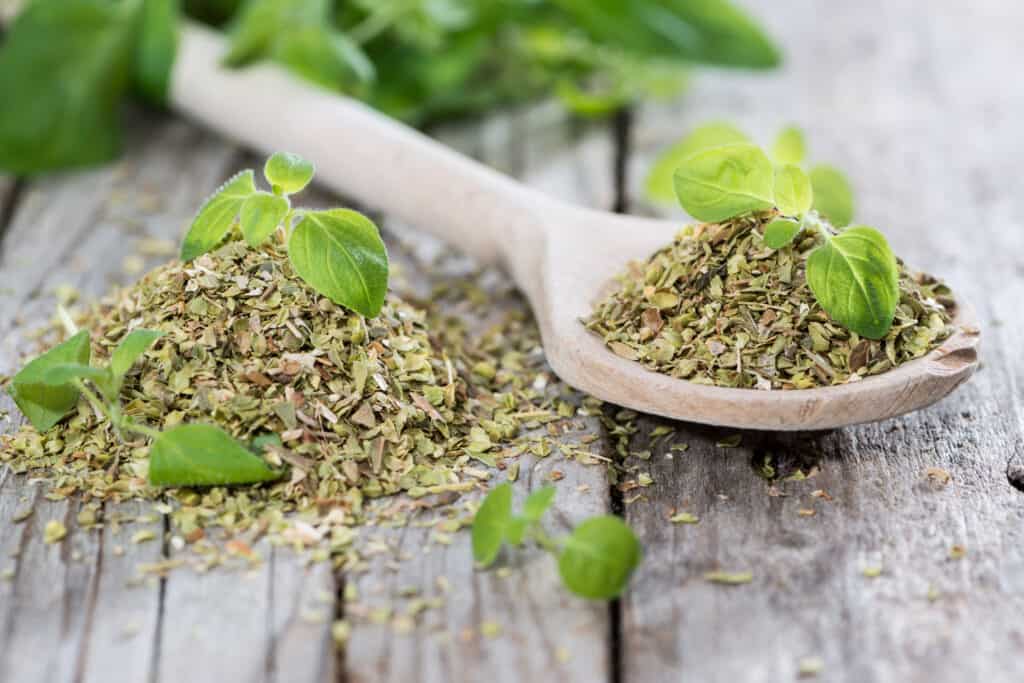
Oregano is a natural anti-fungal, and there are pet supplements that contain safe amounts.
©HandmadePictures/Shutterstock.com
The ASPCA says that oregano is toxic to dogs, cats, and horses, but they would have to consume a lot to cause mild vomiting and diarrhea.
However, there are lots of healthy oregano uses. It’s a natural anti-fungal, and there are pet supplements that contain safe amounts. Instead of adding oregano leaves to your dog’s food, it’s best to use these or let them chew on garden plants.
Preparing Oregano For Winter
Oregano is a perennial, not an annual in warm climates, but as winter approaches, ensure it’s planted in a well-drained spot and trim back the whole bush. This encourages good air circulation and removes any straggly growth.
In cold areas, it’s best to dig up oregano and bring it indoors. A pot of oregano on the kitchen windowsill is handy for the chef, filling the room with a fresh woody scent. You won’t need to buy any more potpourri if there’s an oregano plant in your kitchen.
Alternatively, you can leave oregano plants outside to die off during a cold winter, but first, take a few cuttings and save yourself the expense of buying new plants the following year.
How To Take Oregano Cuttings
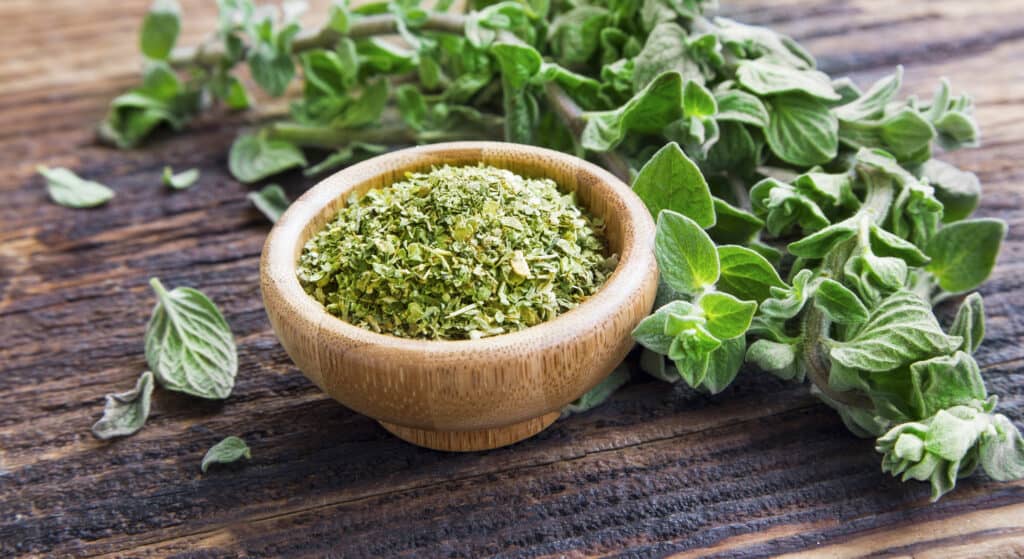
When crushed or minced, oregano can be for oils, herbs, and spices.
©catalina.m/Shutterstock.com
It’s very easy to take oregano cuttings. Like most plants in the mint family, their fleshy stems sprout new roots in a week or two.
- Cut a stem roughly five inches long just above a leaf
- Pull off leaves from the lower two-thirds of the stem.
- Put it in a glass of water
- Change the water every few days
- In ten days to two weeks, thin white roots will emerge.
- Put your new baby oregano plants in gritty compost and keep them damp
In Warm Climates, Oregano Is Perennial
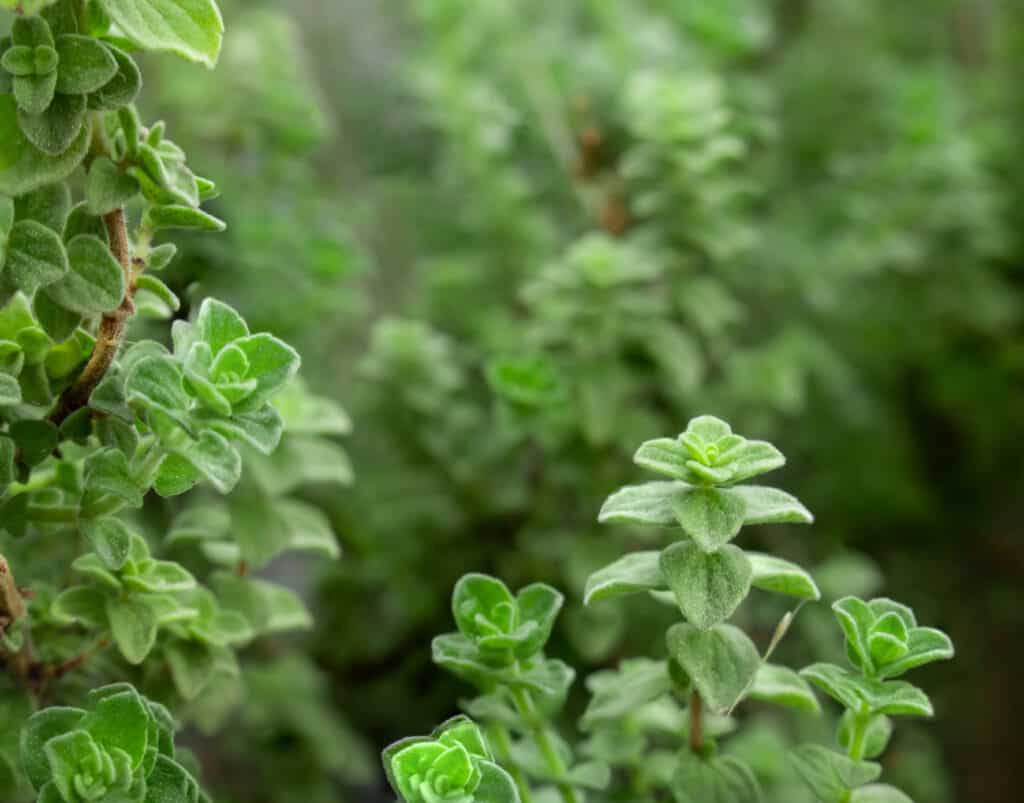
Oregano grows quickly from seeds or cuttings.
©Artem Kontratiev/Shutterstock.com
Tasty oregano is naturally perennial in warm, dry climates but don’t be disappointed if you live in a colder area because oregano is very happy on a sunny kitchen windowsill. It also grows quickly from seed or cuttings, so it’s an excellent annual plant too.
Wherever you live, it’s possible to grow oregano as a perennial or an annual.
Up Next
The photo featured at the top of this post is © catalina.m/Shutterstock.com
Sources
- HEVER CASTLE AND GARDENS / Accessed September 18, 2022
- Royal Botanic Gardens, Kew / Accessed September 18, 2022
- National Library of Medicine / Accessed September 18, 2022
Thank you for reading! Have some feedback for us? Contact the AZ Animals editorial team.







